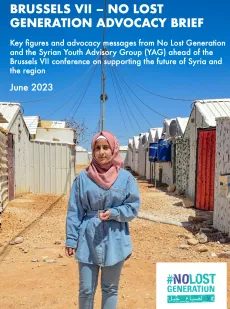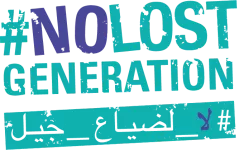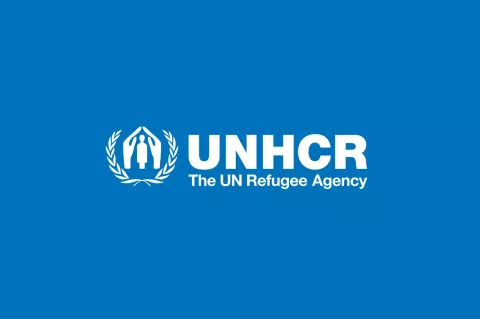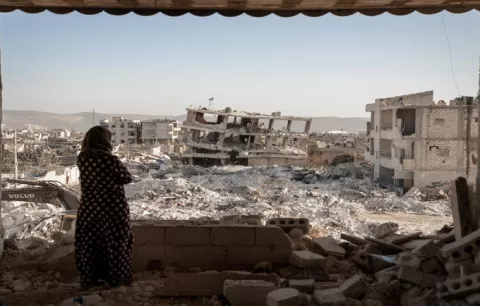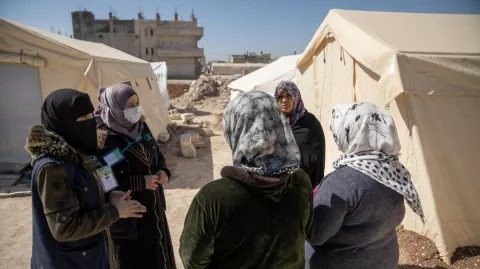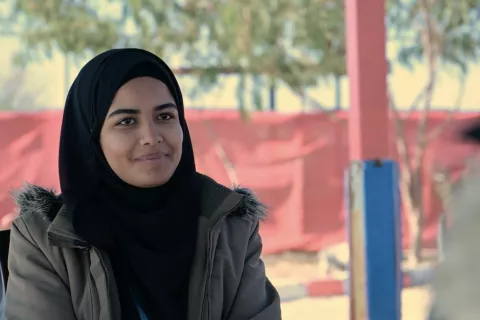Brussels Vii - No Lost Generation Advocacy Brief
No Lost Generation
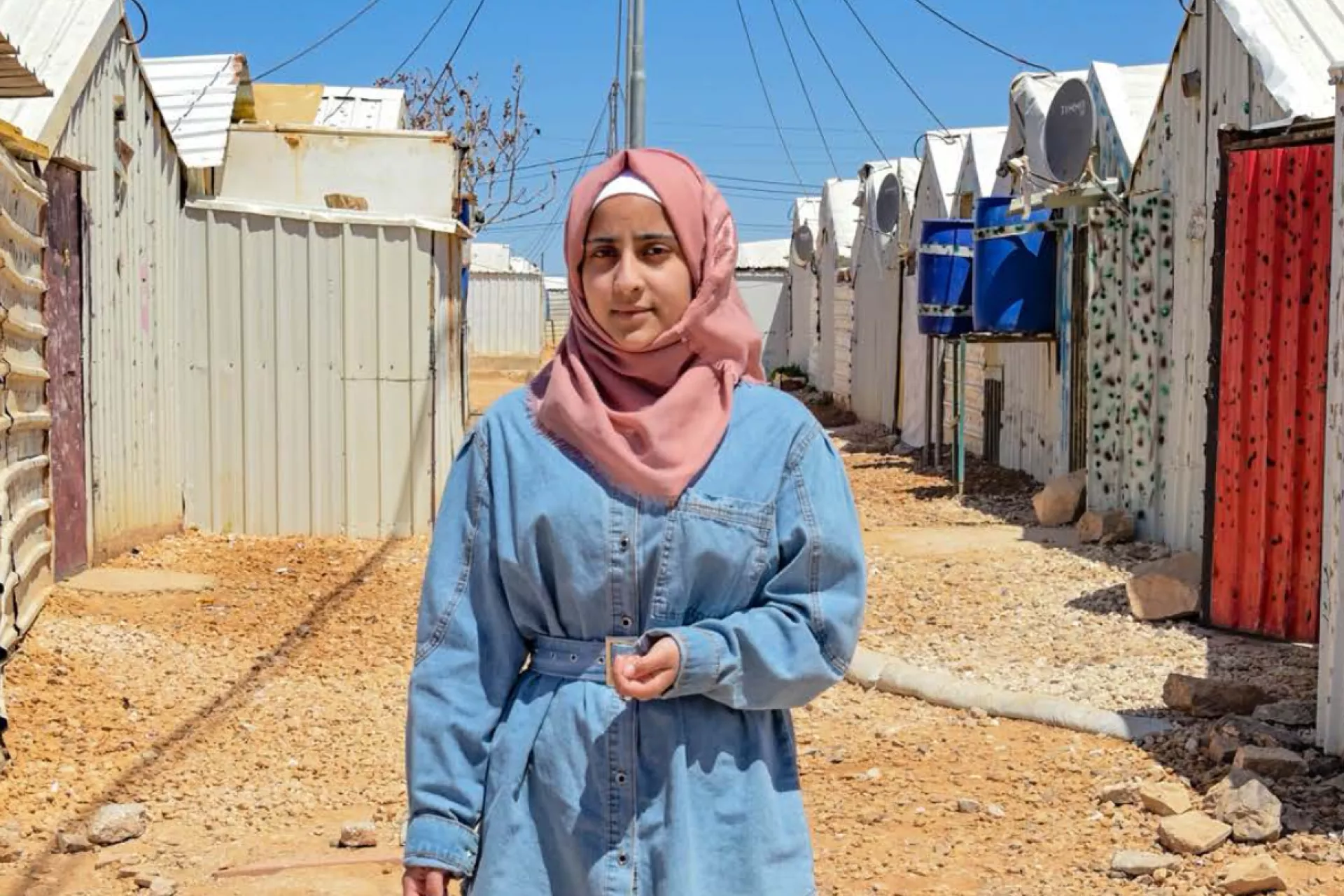
Highlights
Key figures and advocacy messages from No Lost Generation and the Syrian Youth Advisory Group (YAG) ahead of the Brussels VII conference on supporting the future of Syria and the region
(1) On the urgent need to address chronic funding gaps in the Syria crisis response:
- The chronic underfunding of Syria’s Humanitarian Response Plan (HRP) and the Regional Refugee & Resilience Plan (3RP) must urgently be addressed to ensure Syrian children can continue accessing education, child protection, mental health care, and livelihood opportunities.
- While the Syria Earthquake Flash Appeal managed to secure over 99% of the required funding at the March 2023 Brussels conference,1 this will only cover a three-month period.2 More support is needed for the overarching humanitarian response as only 8% of the Syria Humanitarian Response Plan (HRP) for 2023 has been funded thus far.3 And the Türkiye Earthquake Flash Appeal has been only 35% funded as of 18th May.
- International support must be sustained in the face of growing vulnerabilities and the need for more durable solutions. The majority of Syrian refugees living in 3RP countries still want to return home one day, but few intend to return in the immediate future – conditions are not yet in place for large scale and safe voluntary returns. 3RP countries, host communities and refugees are bearing the brunt of this stalemate and deserve committed large scale international support until political progress can be made and return becomes a viable solution.
(2) On answering to the specific education, child protection and mental health needs of Syrian children and young people:
EDUCATION:
- Despite the generosity of host countries, which opened their public schools to refugees, there is an estimated 4 million out of school children in Syria and host countries, who are losing out on education. After 12 years of conflict, many of those children we collectively managed to keep in school and protected from different threats, are now young people who have other needs, such as access to university studies, scholarships, vocational training, as well as sustainable economic opportunities.
- Moreover, more investment needs to be made in repairing and rebuilding the severely damaged education system in Syria, providing adequate resources and infrastructure to ensure safe and inclusive learning environments for all children, including those with disabilities. Recognizing the potential link between psychological distress and the use of physical and emotional violence in schools, investment is needed to create violence-free educational environments by promoting awareness, training educators, and implementing effective policies that protect children from harm.
CHILD PROTECTION:
- The protection needs of vulnerable displaced and refugee children and young people must urgently be addressed, including mitigating risks of child labor, child marriage, gender-based violence, family separation, as well as other forms of violence, abuse, and neglect. Enhance support for families and communities, as well as improve access to an integrated package of quality child friendly services, including specialized child protection services. Prioritize family tracing and reunification services for unaccompanied children.
- Strengthen the protective environment for Syrian refugee children by improving the capacity of children, parents, and communities on prevention of and protection from all forms of violence against children through community engagement, parenting programmes and social and behavioral change programmes.
- Young Syrian girls, women, and female-headed households in Syria and host countries in the region are increasingly vulnerable to various forms of gender-based violence (GBV) including intimate partner violence (IPV) and child marriage. Protection programs needs to be tailored to their needs and must include strong GBV referral pathways as well as safe spaces tailored to their needs which could also protect them from stigma within their communities.
- The increasing economic instability and food insecurity must be addressed by promoting access to livelihood opportunities for families, particularly in areas with high rates of child labor and child marriage to mitigate the spread of harmful coping mechanisms among vulnerable Syrian families. Promoting decent work and livelihood programs for parents, caregivers, and the wider community is key to reduce debt, food insecurity, and depression, as well as discourage harmful coping mechanisms like child marriage or child labor.
MENTAL HEALTH:
- Increasing donor support and funding is needed to improve mental health support among refugee and internally displaced communities. Ensuring sustained and flexible financial commitments from donors to address the chronic underfunding of humanitarian response plans, investing in both immediate lifesaving support and longer-term resilience-building initiatives aimed at improving the lives of Syrian children, young people, and their families. Addressing the high prevalence of depression and psychological distress among both adults and children by increasing access to mental health services, with targeted interventions for those in Northwest Syria and refugee camps in Jordan, such as Azraq and Zaatari, where higher rates of depression have been reported.
(3) On investing in durable solutions that would allow Syrian girls and boys to thrive in the mid to long term:
- Inclusive longer- term development solutions should be center stage. A greater emphasis needs to be placed on policies that enable inclusive solutions and capacities by national and international partners to ensure dignified lives through self-reliance and resilience of host communities, internally displaced persons and refugees, while reducing their dependence on aid. A good example is the recent MoU between UNHCR and the Al Yarmouk University in Jordan to lower fees for all refugee students.
- Donors should commit to providing earmarked development resources to the inclusion agenda in tandem with host governments and local actors committing to expanding refugees’ access to national systems, legal residency and work.
- A greater focus on localization is also needed by investing in local actors, NGOs, CSOs, but also youth groups made up of young people from the IDP, refugee and host communities who can provide adapted and contextually relevant humanitarian approaches that are key to long term development.
